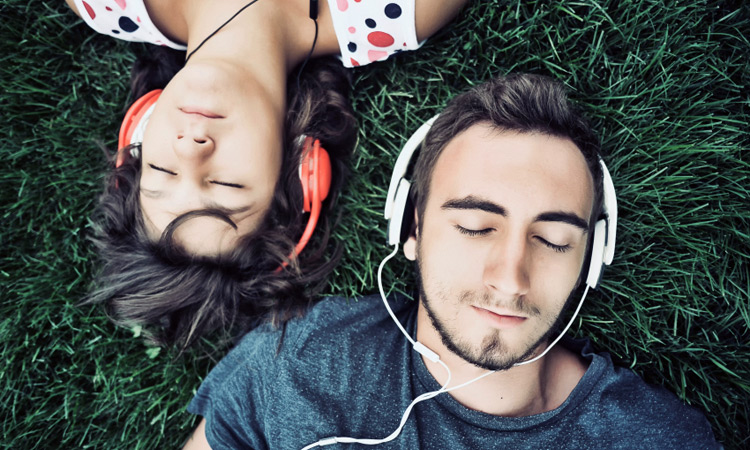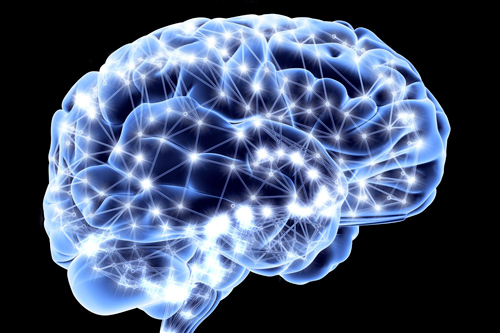 The use of sound—or sound healing—is increasingly being embraced as a means to put a person’s body in harmony and reduce stress and pain. While it may bring to mind groovy New Agers tripping out to transcendental tones, today even those in the medical community are touting the benefits of sound, said to include reduced stress and anxiety. But using sound to sooth is actually nothing new; it’s been practiced worldwide through mantra meditation, and embraced by Sufis, Hindus, Native Americans and Catholic monks—and it began a long time ago.
The use of sound—or sound healing—is increasingly being embraced as a means to put a person’s body in harmony and reduce stress and pain. While it may bring to mind groovy New Agers tripping out to transcendental tones, today even those in the medical community are touting the benefits of sound, said to include reduced stress and anxiety. But using sound to sooth is actually nothing new; it’s been practiced worldwide through mantra meditation, and embraced by Sufis, Hindus, Native Americans and Catholic monks—and it began a long time ago.
The godfather of sound medicine
Travel down history’s timeline past those tuned-in, turned-on hippies all the way back to Pythagoras, the Greek philosopher and mathematician who lived from about 580 to 500 B.C.E. and you’ll find the godfather of sound medicine, says Dr Mitchell L Gaynor, author of The Healing Power of Sound: Recovery from Life-Threatening Illness Using Sound, Voice, and Music. Gaynor notes 4th-century philosopher Iamblichus’ writings on Pythagoras indicate that Pythagoras believed “music contributed greatly to health if used in the right way…his disciples also employed music as medicine, with certain melodies composed to cure the passions of the psyche, as well as ones for despondency and mental anguish.”
Singing Tibetan bowls
Gaynor discovered music’s medicinal effects himself while serving as a doctor at New York Hospital, when a patient, a Tibetan Monk in need of a heart transplant, introduced him to Tibetan singing bowls. Moving a small wooden baton lightly across the rim of the bowl, he says, produced “eerie, otherworldly tones.” He added, “I could feel the vibration physically resonating through my body, touching my core in such a way that I felt in harmony with the universe.” Gaynor subsequently began using a similar bowl of crystal quartz with his patients.
Waves of vibrations
Gaynor says, “In terms of sound and healing, sound waves may entrain the human organism—causing us to vibrate in resonance with those waves—in a variety of interconnected ways.” He adds that sound “may alter cellular functions through energetic effects; it may entrain biological systems to function more homeostatically; it may becalm the mind and therefore the body; or it may have emotional effects, which influence neurotransmitters and neuropeptides, which in turn help to regulate the immune system.”
Ancient practices, modern medicine
Dr Helen Lavretsky, a psychiatry professor at the Semel Institute for Neuroscience and Human Behavior at the Geffen School of Medicine at UCLA who also works with sounds, helped conduct a study in which 45 family dementia caregivers were randomized to either engage in Kirtan Kriya meditation—an ancient practice involving the singing of sounds—or listen to relaxing music for 12 minutes daily for 8 weeks. In the Kirtan Kriya meditators, the study found that 68 of their genes responded differently, a result that indicated a reduction in the biological mechanisms responsible for an increase in the immune system’s inflammatory response.
In a related pilot UCLA study, results also indicated that brief daily Kirtan Kriya meditation practices could lead to improved mental and cognitive functioning and lower levels of depressive symptoms.
Get higher, baby
Gaynor notes that “sound can transform negative, repressed emotions into a state of psychological equanimity that has direct and immediate effects on our physiology. Sonic entrainment can also restore harmony between our innermost selves—our essence—and the universe, thus reawakening our spiritual consciousness.”
Dr Eben Alexander, a renowned academic neurosurgeon whose near death experience was chronicled in the best-selling book Proof of Heaven, also touts the benefits of using sound with select frequencies and tones that include a range of delta, theta and alpha rhythms to harmonically draw the brain into hypnagogia, the transitional state between wakefulness and sleep to bring expanded states of consciousness, sounds such as those developed by Sacred Acoustics.
Karen Newell, co-founder of Sacred Acoustics, states that these sounds can promote healing, as she believes all physical ailments begin in the body’s energy field. “The sounds included in Sacred Acoustics recordings have the potential to activate this energy field, bringing the listener’s awareness to whatever is stored within it.…As these experiences are acknowledged, it allows for release of their hold on us,” she says, adding that, “One can attain a coherent state while listening, then use intention to focus on well-being in order to bring healing.”
Finding your life song
While the idea of sound healing may be radical, and still New Agey to some, Gaynor reminds us that those who came before us “intuitively embraced sounds as the very essence of the life force and wove it into their creation myths.” He reminds us that “whether we invoke OM or chant simple songs, we celebrate the link forged through generations of humankind, a link that connects us to our earliest ancestors.”
Click here to get inspired by Rose’s easy steps to positively change your mind


